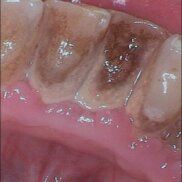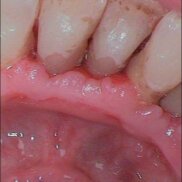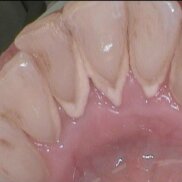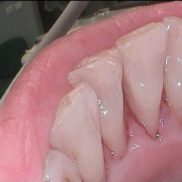- 1
- 2
- 3
- 4
Dental plaque builds up on hard-to-reach dental surfaces or places that have not been properly cleaned with a toothbrush. As a result of the interaction between dental plaque and oral fluids, dental plaque starts to harden or mineralise. Deposited calculus starts to make its way deeper towards the root apex, causing gingivitis and bone loss. Periodontal pockets form at the places of bone loss, thus creating a favourable environment for bacterial growth. This leads to bleeding, swelling, redness, and often also bad breath. Read more about it in the section “Periodontal treatment”.
Dental calculus is removed with a special curette or ultrasonic instrument. If necessary, dental surfaces and exposed necks of teeth are polished with a special paste to ensure a smooth surface that prevents bacterial adhesion.
After the removal of calculus and dental plaque, it is important to practise proper oral hygiene: proper teeth brushing and the use of dental floss, interdental brushes and mouthwash. Read more about it in the section “Soda blasting”.
See also “Smile packages”.



